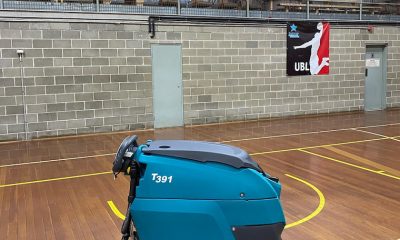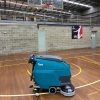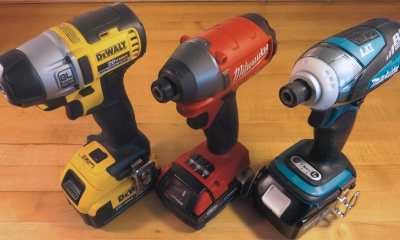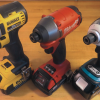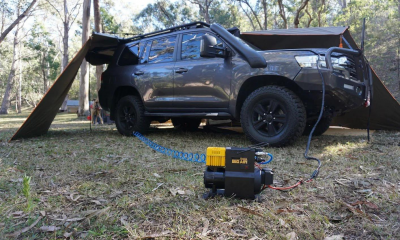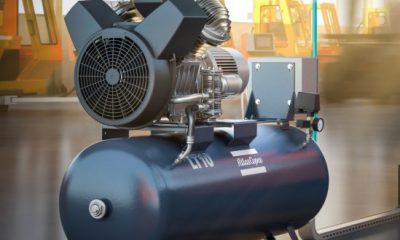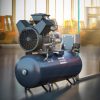Industrial Equipment
Power Tool Batteries: Find Out Why They’re So Beneficial
From vacuum cleaners and drills, to chainsaws and compressors, people are dumping their bulky electric and petrol-powered tools, and overwhelmingly adopting cordless power tools as their new preference. And what’s not to find preferable? They’re lightweight, they’re portable, and as the technology has advanced, they’ve grown evermore suitable for any job imaginable.
It’s not surprising either that as cordless motors have gotten smaller, more powerful, and more efficient, that cordless power sources have also had to follow suit. After all, there wouldn’t be much value in cutting the cord or packing away your sparkplugs if you had to worry about switching batteries every few minutes.
Fortunately, battery technology hasn’t only kept in-step with the tool tech, it’s largely surpassed it in many ways. With that in mind, let’s take a look at the impact that battery performance attributes and even lifespans are having on the overall evolution of cordless tools, and how that evolution is changing the way tools are being used.
Batteries for any job
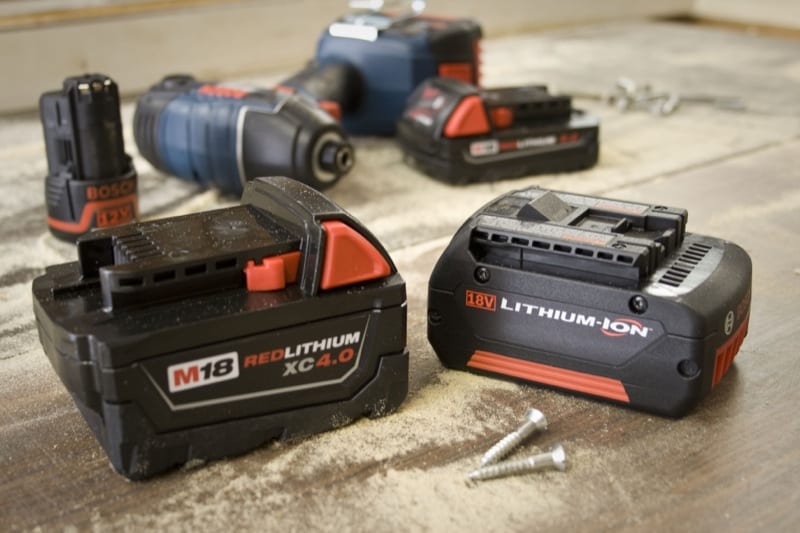
There’s no question about it: the versatility and capability found in today’s cordless power tools are due almost exclusively to the technologies being built into the batteries. Now, more than ever, tool manufacturers are directly involved with battery cell development. The advancements in the charging rates, life cycles and capacities of power tool batteries have made them as integral to tool design as the functionality of the tools themselves.
It means that no matter how or where you need to deploy a cordless tool, you can count on it being backed by battery technology that’s geared toward the longest possible run times and shortest possible charge times necessary for getting any job done.
Lithium-ion cells are the cornerstone of modern battery-operated tool technology, and the benefits that the latest generation of high-capacity, high-performance battery systems are bringing to the table couldn’t be more impressive.
- They’re modular
Depending on the usage or tradecraft, it’s not uncommon for manufacturers to produce entire tool systems designed around specific types of activities. And while some of these systems can easily exceed 200 different tools, producing 200 different types of battery to power them isn’t an option.
The modularity that manufacturers are building into their tool platforms ensures that their fuel cells also have to be perfectly compatible, and with complete backward and forward interchangeability. It’s this kind of exemplary battery management that allows users to conveniently scale-up their power tool complement without the need to invest in multiple types and sizes of batteries.
- They’re mobile
Mobility and portability are the hallmarks of cordless tools, but just how mobile can they really become? Batteries do more than just eliminate the need for extension cords; as manufacturers have taken portability to even greater heights with cross-platform, man-portable power supplies built into lightweight backpack harnesses.
On a single charge, these portable battery units combine the equivalent of up to 8, 40V cells into a 10kg pack that can either be worn (to power rolling equipment such as cordless movers and power-assisted wheelbarrows) or detached from their harnesses. With auxiliary adapters they can be used to power groups of tools as part of a mobile power station.
- They’re multifunctional
The technology that’s now inherent to battery cells means that they’re suitable for practically any piece of equipment that requires power, not just handheld drills and screwdrivers. From the standard, rechargeable 4V batteries used to power flashlights and screwdrivers, to the massively intelligent 56V power cells powering impact wrenches producing 1,800 ft-lbs of precision-delivered torque, the range of battery functionality continues to expand. This happens at the same pace that manufacturers are expanding their cordless tool offerings.
- They’re maximized
With today’s cordless power tool batteries, maximization is just as important as miniaturization. And while it’s easy to point out the cord-free, low-noise, and low-vibration advantages that cordless tools bring, it’s the development of increasingly more specialized and demanding tools and tool platforms that’s powering the leaps and bounds in battery design. From cordless radio/USB charging station packs and jobsite lighting systems, to battery-heated attire for extreme cold weather environments, the concept of the completely cordless jobsite is very much on the horizon because of the advancements in batteries.
The cordless jobsite
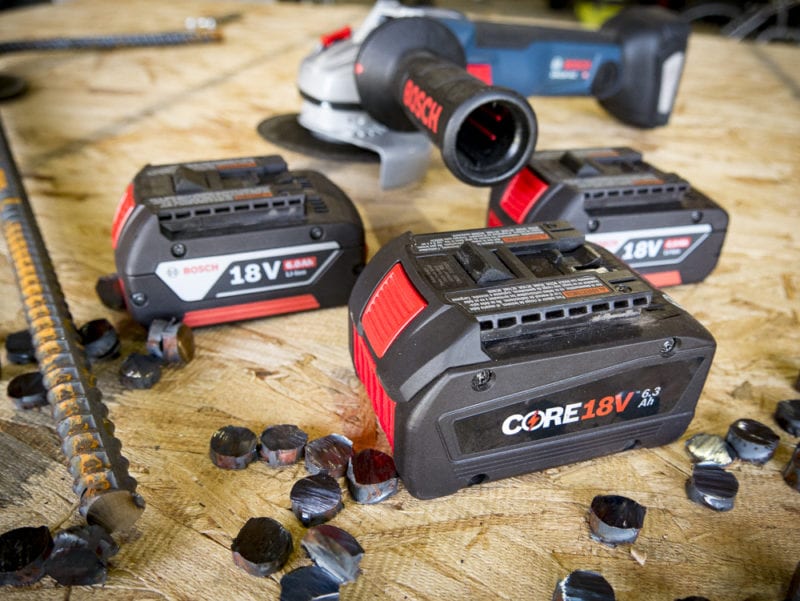
Although the concept of the totally cordless jobsite may have seemed unlikely only a few years ago, it’s very much achievable now. Combined with the growing advantages in smart tool programming, and the efficiency of brushless motors, cordless tool batteries continue to prove that they’re capable of powering even the highest power-drawing tools from any 230V or 240V worksite.
Across a growing range of platforms, batteries are now even able to change their outputs to match the exact requirement of the tool they’re powering. Improved power management characteristics, like increased power density and reduced operating temperatures, have made this type of jobsite optimization possible. But it’s the improvements in charging times that have been the most significant contributor to output flexibility.
Charging technology continues to evolve, which is why multi-platform, multi-bay chargers are now designed to provide 50% more charging power, 40% – 50% faster than previously. On the ground it means that shorter charge times and inherently longer run times, without damaging or overcharging batteries, have become key contributors to cordless productivity. And it’s that kind of increased productivity that’s the main objective of the cordless jobsite.
The conclusion
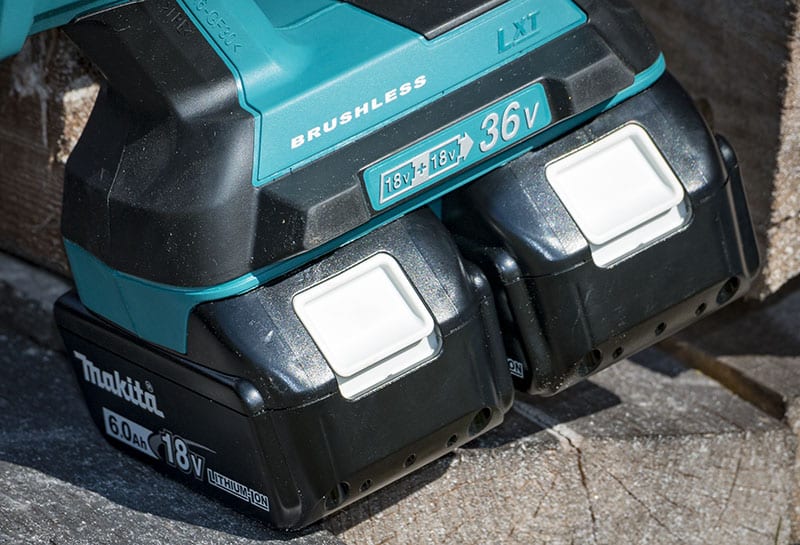
At the end of the day, even though the progress made in the development of the tools themselves has always been at the centre of discussions about cordless technology, it’s the advancements made in battery technology that have been the most significant contributors to cordless tool efficiency.
Even as the costs of portable tools have dropped considerable, the development evolution of power tool batteries has only accelerated. It’s an essential indicator of just how much the future of both existing and new cordless technologies are dependent on fuel cell technologies to continue to pave the way.
One thing’s for certain, though, cordless batteries will continue to redefine the way both DIY and professional users approach power tool purchases in the future. If you’re in the market for new tools, or looking for new-tech batteries for the tools you already own, now’s the time to consider all the benefits that the new generation of batteries has to offer.
Writing for the blog since 2012, Chris simply loves the idea of providing people with useful info on business, technology, vehicles, industry, sports and travel – all subjects of his interest. Even though he sounds like quite the butch, he’d watch a chick flick occasionally if it makes the wife happy, and he’s a fan of skincare routines though you’d never have him admit that unless you compliment his impeccable skin complexion.

